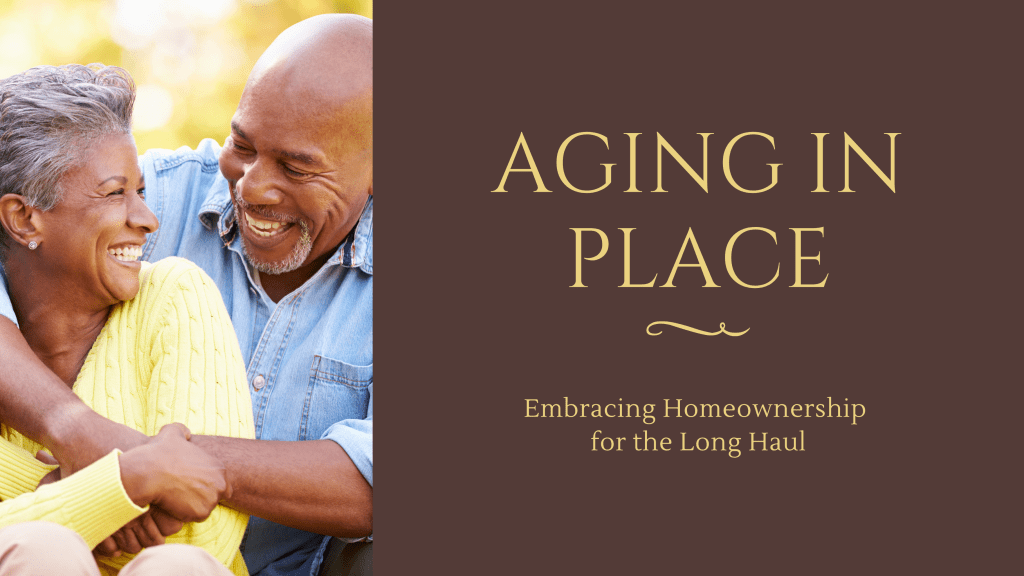Aging in Place: Embracing Homeownership for the Long Haul

As retirement approaches and age catches up, the traditional notion suggests that people would consider selling their homes and moving to smaller, more manageable properties. However, recent data from a Bank of America survey has shattered this assumption, revealing a surprising trend. A remarkable 70% of homeowners aged 45 to 76 have made a resolute decision to age in place, opting to stay right where they are.
Love for the Familiar: The Allure of Aging in Place
The survey delves into the reasons behind this growing preference, and a significant 78% of respondents expressed their profound attachment to their current homes. They see no reason to abandon a place that has become much more than just bricks and mortar—it is a cherished abode filled with countless memories and deep sentimental value.
Personalization and Ownership: The Driving Forces
Another compelling factor driving homeowners to remain in their current properties is the substantial investment they have made in their dwellings. An impressive 22% of respondents have dedicated considerable time, effort, and creativity into improving and customizing their homes, making them unique reflections of their personalities and lifestyles. With such a personal touch, it’s no wonder they prefer the comfort of familiarity over the uncertainties of starting anew.
Financial Prudence: The Bedrock of Aging in Place
The financial aspect plays a significant role in the decision-making process for homeowners approaching retirement. A substantial 32% of respondents cited the desire to avoid high home prices and interest rates as a key reason for choosing to age in place. Moreover, 20% mentioned the benefits of having a low mortgage payment or owning a paid-off home, which contributes to their financial security during their golden years.
Stability in Mortgage Rates: The Foundation of Decision-Making
The survey also brought to light the importance of favorable mortgage rates in the aging-in-place decision. An astounding 95% of current mortgage holders enjoy interest rates of 5% or less, making them wary of giving up this advantage. Staying in their homes allows them to retain these attractive rates and maintain financial stability throughout their retirement journey.
The Fluctuating Appeal of Renting
While downsizing through renting might seem appealing, it loses some of its allure for retirees on fixed incomes due to the unpredictable nature of rental costs. Homeownership, on the other hand, provides a sense of security and peace of mind, allowing retirees to better manage their financial predictability.
The Ripple Effect on the Housing Market
The decision of baby boomers and Gen Xers to hold onto their properties can have far-reaching implications for the country’s housing market. With the current tight home inventory, their reluctance to sell might present challenges for the younger generations looking to enter the housing market. This potential barrier could make it more difficult for young adults and families to achieve their dream of homeownership.
Assisting the Next Generation: A Generous Hand
Despite the potential challenges, homeowners in these demographic groups have expressed their willingness to support the next generation of homeowners. The Bank of America survey identified several ways in which they plan to lend a helping hand:
- Providing Financial Assistance: A substantial 38% of respondents are willing to contribute money to assist future buyers with their home purchase, easing some of the financial burdens typically faced by first-time buyers in the competitive real estate market.
- Preserving the Family Home: The survey found that 36% of respondents are keen on keeping the home within the family, passing it down to the next generation. This practice not only preserves the family home’s legacy but also provides younger family members with a stable and meaningful living space.
- Embracing Multigenerational Living: Approximately 12% of respondents are open to the idea of living together in a multigenerational space. This arrangement fosters stronger family bonds and offers various practical benefits, such as shared expenses and caregiving responsibilities.
Conclusion: Aging in Place as a Prevailing Trend
In conclusion, the desire to age in place is becoming an increasingly prevalent choice among homeowners aged 45 to 76. This decision is deeply rooted in the emotional attachment to their homes, the substantial investments they’ve made in their properties, and the desire for financial security. While this trend may impact the housing market, these homeowners are eager to support the next generation’s quest for homeownership through various means.
